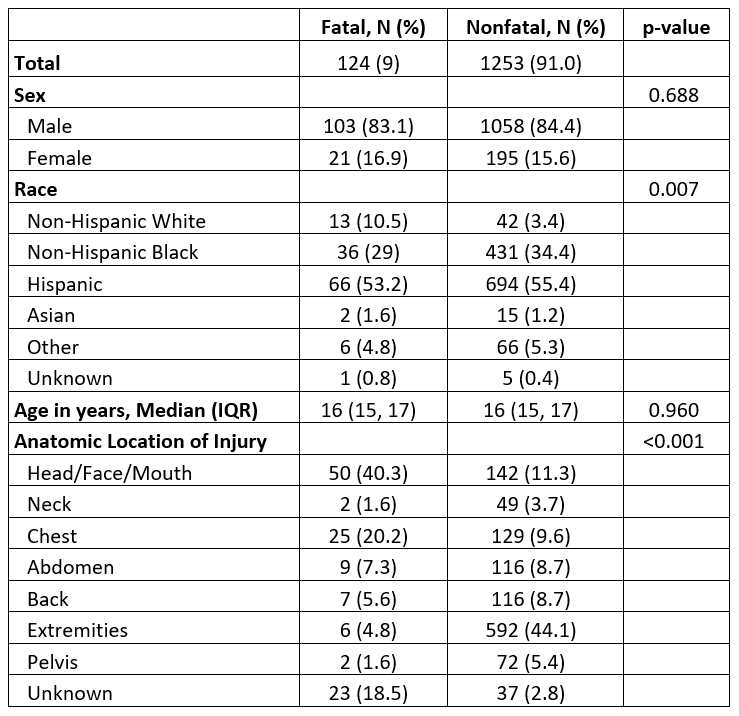Injury Prevention
Injury Prevention 1
144 - The unequal burden of pediatric firearm injury in Los Angeles County: identifying children at greatest risk based on home zip code
Friday, April 28, 2023
5:15 PM - 7:15 PM ET
Poster Number: 144
Publication Number: 144.121
Publication Number: 144.121
Elizabeth Rinaldi, Children's Hospital Los Angeles, Los Angeles, CA, United States; Abigail Brenner, Children's Hospital Los Angeles, Los Angeles, CA, United States; Pradip P.. Chaudhari, Children's Hospital Los Angeles, Los Angeles, CA, United States; Jeffrey Birnbaum, Children's Hospital Los Angeles, Los Angeles, CA, United States

Elizabeth Rinaldi, MD
Resident Physician
Children's Hospital Los Angeles
Los Angeles, California, United States
Presenting Author(s)
Background: In November 2022, the American Academy of Pediatrics released recommendations for community-level interventions aimed at decreasing the incidence of pediatric firearm injuries, which have become a leading cause of death in children in the United States. To best implement interventions to decrease pediatric firearm injury, it is critical to identify the demographic and geographic factors that place children at increased risk.
Objective: To describe clinical outcomes of fatal and non-fatal pediatric firearm injuries and to identify pediatric populations at increased risk for firearm injury in our community.
Design/Methods: We conducted a retrospective study of children aged < 18 years evaluated in 15 Los Angeles (LA) County trauma centers between 2010 and 2021 for firearm injury. Children with missing home zip codes were excluded. Clinical data were obtained from the Trauma and Emergency Medicine Information System Registry. Population data was obtained from the 2015 Annual Commuter Survey. Our primary outcome was fatality from firearm injury. Bivariate analyses were performed using Chi-square and Mann Whitney tests to compare demographic and clinical data of victims with fatal versus nonfatal injuries. Odds ratios comparing firearm injury incidence among children of different demographic groups and zip codes were calculated using population-level data.
Results: A total of 1377 pediatric firearm injury victims were included in the final analysis. Median (IQR) age was 16.0 (15.0,17.0) years and 1166 (84%) were male. Overall mortality for the cohort was 9%, with patient race and anatomic location of injury significantly associated with fatality (p=0.007 and p< 0.001 respectively, Table 1). Black and Hispanic children were significantly more likely to be victims of firearm injury than White children (OR 19.7, CI 14.9-26.0 and OR 3.9, CI 3.0-5.1 respectively). The ten zip codes in LA County with the highest incidence of firearm injury accounted for 28% of all injuries despite containing only 6% of the total pediatric population. Children living in these zip codes were nearly six times more likely to become victims of firearm injury than those living in the rest of the county (OR 5.9, CI 5.2-6.6).
Conclusion(s): Demographic factors associated with pediatric firearm injury in our community included Black and Hispanic race, male sex, and adolescent age. The mortality rate remains significant across all demographic categories. Children living in specific zip codes are at greater risk of injury and death than their peers in the rest of the county, highlighting the need for targeted, local interventions.

